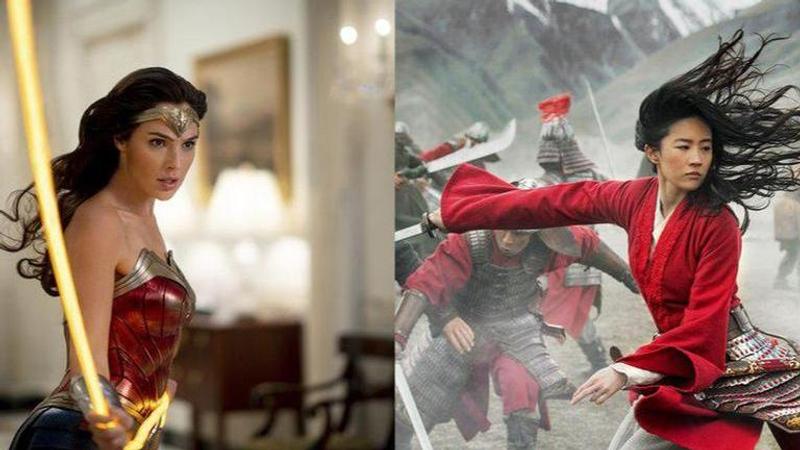Published 09:05 IST, November 26th 2020
The pandemic is changing Hollywood, maybe forever
Just as the Spanish Flu, which weeded out smaller companies and contributed to the formation of the studio system, COVID is remaking Hollywood, accelerating a digital makeover and potentially reordering an industry that was already in flux.

“No New ‘Movies’ Till Influenza Ends” blared a New York Times headline on Oct. 10, 1918, while the deadly second wave of the Spanish Flu was unfolding.
A century later, during another pandemic, movies — quotes no longer necessary — are again facing a critical juncture. But it’s not because new films haven’t been coming out. By streaming service, video-on-demand, virtual theater or actual theater, a steady diet of films have been released under COVID-19. The Times has reviewed more than 460 new movies since mid-March.
Yet until recently — with only a few exceptions — those haven’t been the big-budget spectacles Hollywood runs on. Eight months into the pandemic, that’s changing. Last month, the Walt Disney Co. experimented with the $200 million “Mulan” as a premium buy on its fast-growing streaming service, Disney+ — where the Pixar film “Soul” will also go on Dec. 25. WarnerMedia last week announced that “Wonder Woman 1984” — a movie that might have made $1 billion at the box office in a normal summer — will land in theaters and on HBO Max simultaneously next month.
Much remains uncertain about how the movie business will survive the pandemic. But it’s increasingly clear that Hollywood won’t be the same. Just as the Spanish Flu, which weeded out smaller companies and contributed to the formation of the studio system, COVID is remaking Hollywood, accelerating a digital makeover and potentially reordering an industry that was already in flux.
“I don’t think the genie will ever be back in the bottle,” says veteran producer Peter Guber, president of Mandalay Entertainment and former chief of Sony Pictures. “It will be a new studio system. Instead of MGM and Fox, they’re going to be Disney and Disney+, Amazon, Apple, Netflix, HBO Max and Peacock.”
Many of the pivots in 2020 can be chalked up to the unusual circumstances. But several studios are making more long-term realignments around streaming. WarnerMedia, the AT&T conglomerate that owns Warner Bros. (founded in 1923), is now run by Jason Kilar, best known as the former chief executive of Hulu. Last month, Disney chief executive Bob Chapek, the Robert Iger heir, announced a reorganization to emphasize streaming and “accelerate our direct-to-consumer business.”
Universal Pictures, owned by Comcast, has pushed aggressively into video-on-demand. Its first major foray, “Trolls,” kicked up a feud with theater owners. But as the pandemic wore on, Universal hatched unprecedented deals with AMC and Cinemark, the largest and third-largest chains, respectively, to dramatically shorten the traditional theatrical window (usually about three months) to just 17 days. After that time, Universal can move releases that don’t reach certain box-office thresholds to digital rental.
There’s widespread acknowledgement that the days of 90-day theatrical runs are over.
“Windows are clearly changing,” says Chris Aronson, distribution chief for Paramount Pictures. “All this stuff that’s going on now in the business was going to happen, the evolution is just happening faster than it would have. What would have taken three to five years is going to be done in a year, maybe a year and a half.”
That condensed period of rapid change is happening at the same time as a land rush for streaming market share, as Disney+, HBO Max, Apple and Peacock try to wrestle for a piece of the home viewing audience dominated by Netflix and Amazon. With theme parks struggling and worldwide box office down tens of billions, streaming is a bright spot for media companies, and the pandemic may offer a once-in-a-lifetime opportunity to lure subscribers. “Wonder Woman 1984” and “Soul” are essentially very expensive advertisements for those streaming services.
It can be easy to cheer such moves, even if their financial performance remain cloudy (no studio has been transparent about its viewership numbers or digital grosses) and their long-term viability uncertain. Can you replicate $1 billion in box office in new subscriptions? And for how long will the one-time bounce of a new movie (unlike a series staggered over weeks or months) drive subscribers once streaming services are closer to tapping as many homes as they can?
“The whole thing is more complicated than people want it to be,” says Ira Deutchman, the veteran independent film producer and Columbia University professor.
Deutchman considers the idea that people, after a year of quarantines and lockdowns, won’t want to leave their living room “ludicrous.” But he does imagine continued mergers and acquisitions, and “a new equilibrium” for distributors and theater owners.
“It could be about pricing," he says. "It could be about the way film rental is split between them. There are a lot of things that are potentially on the table.”
So what could that mean on the other side of COVID, if moviegoers are once again comfortable sitting in packed theaters on opening weekend? It will almost certainly mean the months-long runs of films like “Titanic” or “Get Out” are a thing of the past. It could mean variable pricing on different nights. It could mean an even greater division between the franchise films of the multiplex and the boutique art house, with everything in between going straight to streaming.
Some things, though, will stay the same.
“If you’re going to be in this business, no matter what you do or where it plays, whether it’s streaming or in cinemas, you’re going to make hits and you’re going to make flops," says Guber. "The idea is to make more hits than flops.”
(Image credit: AP)
Updated 09:05 IST, November 26th 2020




